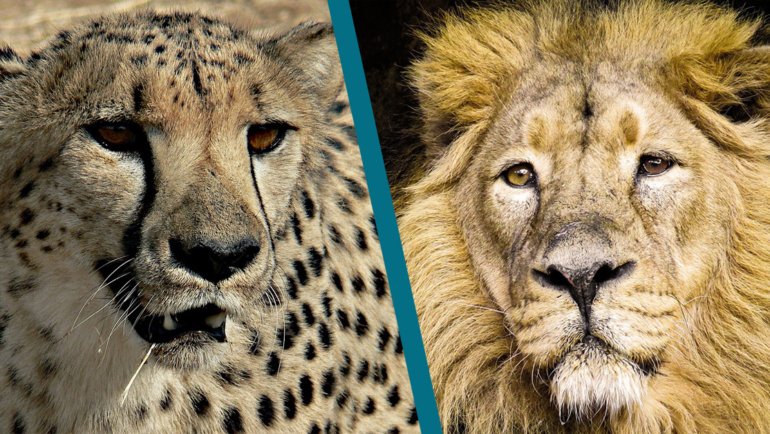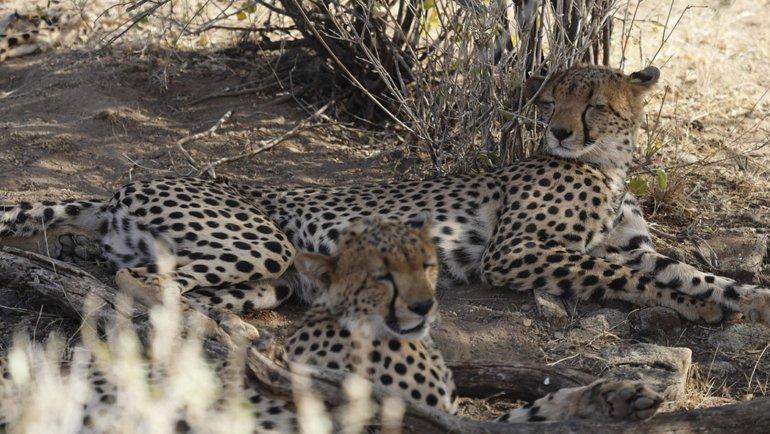The animal kingdom is full of wonders, and the cheetah stands out as one of its most awe-inspiring marvels. Crowned as the fastest land animal on Earth, the cheetah’s ability to reach blistering speeds isn’t just a claim to fame—it’s a crucial survival mechanism.
In the vast landscapes of Africa, where prey is agile and the competition is fierce, speed can mean the difference between life and death.
The Cheetah’s Speed Stats
If one were to conduct a race among all land animals, the cheetah would undoubtedly claim the gold medal. Here are some staggering figures to put this speedster’s capabilities into perspective:
- Maximum Recorded Speed: Cheetahs have been clocked at incredible speeds of up to 70 mph (112 km/h) during short bursts.
- Average Speed During a Hunt: While chasing prey, a cheetah maintains an average speed of 40-60 mph (64-97 km/h).
- Comparison with Other Fast Animals: The pronghorn antelope, often considered the second-fastest land animal, can run at speeds up to 55 mph (89 km/h). However, it can sustain its speed for longer durations. The greyhound, a fast domesticated animal, can reach up to 45 mph (72 km/h). Yet, even these swift creatures lag behind the unparalleled speed of the cheetah.
Why Are Cheetahs So Fast? Anatomy of Speed
Nature has equipped the cheetah with an array of specialized features, turning it into a perfect sprinting machine.
- Lightweight Frame: Unlike other big cats, cheetahs have a lightweight body, reducing the energy expended during a sprint.
- Large Nasal Passages: These allow for an increased oxygen intake, fueling the cheetah’s muscles during intense chases.
- Non-retractable Claws: While most cats have retractable claws, a cheetah’s claws are semi-retractable. This provides extra grip on the ground, much like the cleats of a sports shoe.
- Long Tail: Acting like a rudder on a boat, the cheetah’s tail provides balance, helping it make sharp turns at high speeds.
- Slender Body and Long Legs: This build allows for a longer stride, covering more ground in less time.
Each of these features, crafted meticulously by evolution, has a singular purpose: to make the cheetah the ultimate sprinter of the wild.
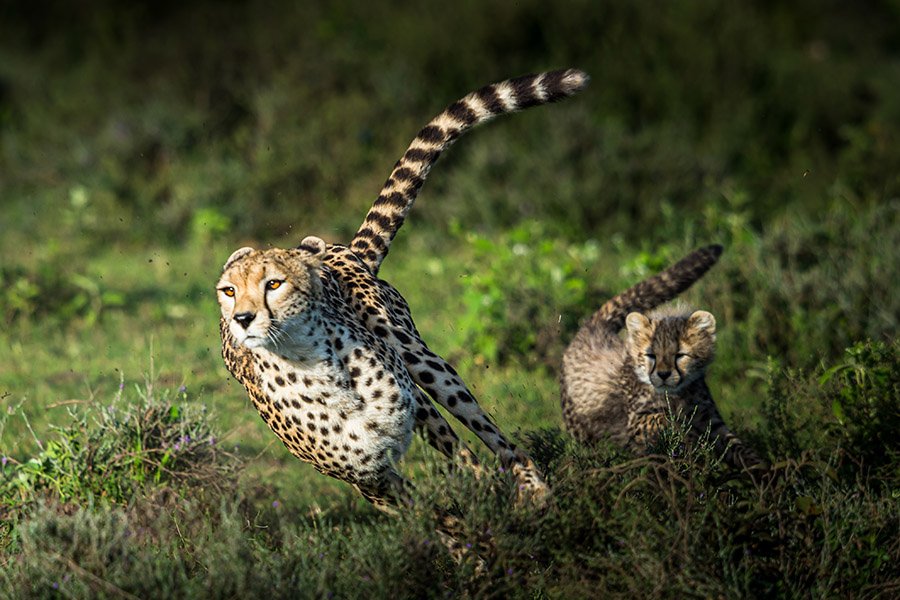
The Sprint of a Cheetah: A Detailed Breakdown
Every cheetah chase is a masterclass in precision, power, and strategy. Here’s a step-by-step breakdown of this riveting spectacle:
Stalk and Start: Cheetahs begin their hunt with a stealthy approach, using tall grass and terrains to stay hidden. This strategy allows them to get as close as possible to their prey, usually within 50 to 60 meters, before initiating the chase.
Acceleration: Once they decide to strike, cheetahs can go from 0 to 60 mph (97 km/h) in just a few seconds, an acceleration that rivals some of the world’s fastest cars.
Deceleration and Capture: The sprint, however, is short-lived, usually lasting no more than 20-30 seconds. Towards the end, the cheetah uses its sharp dewclaw to trip the prey, followed by a suffocating bite to the neck.
Eyesight: An often overlooked but vital component of the chase is the cheetah’s keen eyesight. Their large eyes, equipped with a high concentration of nerve cells, help pinpoint and track their fast-moving prey.
Energy Expenditure
Speed, while being the cheetah’s most significant advantage, comes at a considerable metabolic cost:
High Metabolic Rate: Running at such extreme speeds causes the cheetah’s body temperature to skyrocket. This is partly due to the rapid muscle contractions generating immense heat.
Rest After Chase: Immediately after the sprint, a cheetah needs to rest and cool down, often for several minutes. It pants heavily, taking in large volumes of air to bring its body temperature down.
Risk of Theft: This post-chase vulnerability is often exploited by other predators. It’s not uncommon for opportunistic animals like hyenas or lions to swoop in and steal the cheetah’s hard-earned meal during this recovery period.
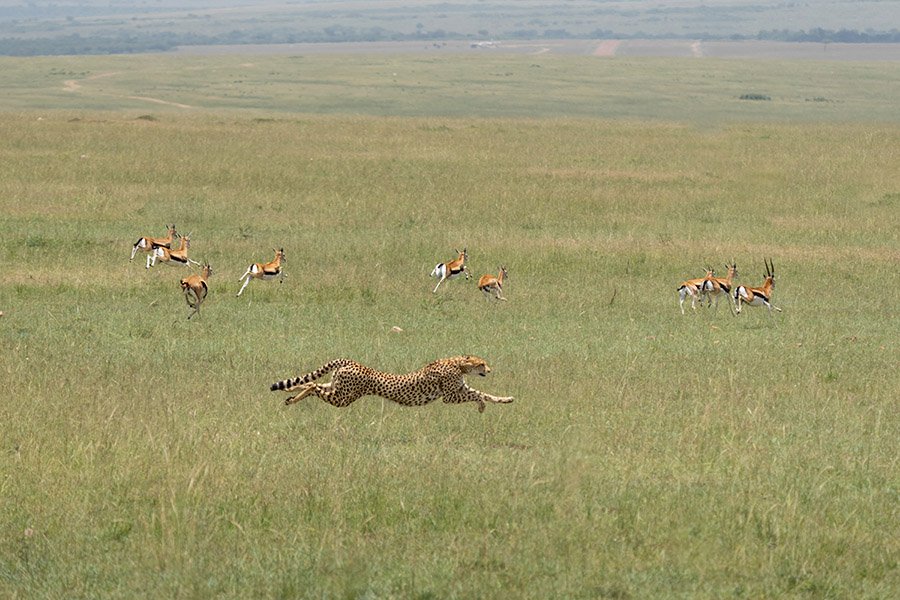
Cheetahs vs. Cars: A Modern Comparison
Drawing a parallel between the natural world and human innovation, the cheetah’s speed and acceleration can be compared to modern automobiles:
Acceleration: A cheetah’s 0 to 60 mph (0 to 97 km/h) acceleration is comparable to high-end sports cars. For instance, a Porsche 911 can achieve this in about 2.7 seconds, closely mirroring the cheetah’s prowess.
Efficiency: While cars achieve their acceleration using powerful engines and high-octane fuel, the cheetah’s speed is a result of millions of years of evolutionary refinement. It’s the result of nature’s efficiency and design.
Adaptability: Unlike cars, which require well-maintained roads for optimum performance, cheetahs can achieve their top speeds in varied terrains, from grassy savannahs to semi-arid landscapes.
What Animal is Faster Than a Cheetah?
While the cheetah is the fastest land animal, when we expand the scope to the entire animal kingdom, there are creatures in the air and water that surpass the cheetah’s speed.
The peregrine falcon, for instance, can reach speeds of up to 240 mph (386 km/h) during its hunting stoop (high-speed dive), making it the fastest animal on Earth. However, in the realm of land-dwelling animals, the cheetah remains unmatched.
How Fast is The Fastest Cheetah in The World?
The fastest recorded speed of a cheetah is around 70 mph (112 km/h). This astonishing speed was clocked during short bursts, typically while hunting, and can’t be sustained for long durations. It’s worth noting that individual speeds might vary based on factors like age, health, and environment.
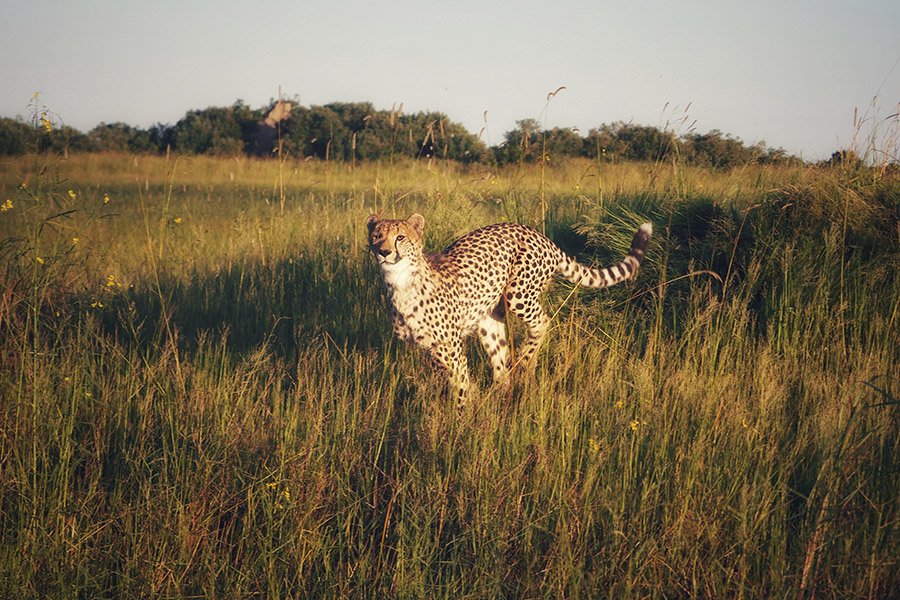
Threats to the Cheetah’s Reign
As unparalleled as the cheetah’s speed might be, they face numerous challenges that threaten their dominance on the African plains:
Habitat Loss: Rapid urbanization and agricultural expansion have shrunk the cheetah’s natural habitats. Reduced territories not only limit their hunting grounds but also bring them closer to human settlements, increasing human-wildlife conflicts.
Human Interference: From being hunted for their exquisite fur to getting trapped in fences meant for livestock protection, human activities, directly and indirectly, pose significant risks to the cheetah population.
Genetic Bottleneck: Historical events have led to a decrease in the genetic diversity of cheetahs. This reduced diversity makes them more susceptible to diseases and decreases their adaptability to changing environmental conditions.
Final Thoughts
The cheetah’s mesmerizing speed is more than just a record-breaking feat—it’s an embodiment of evolution’s prowess, perfected over millions of years.
As we marvel at their sprints and revel in comparisons with our mechanical creations, it’s crucial to remember that these magnificent creatures are facing an uphill battle for survival. Their speed, while astonishing, cannot outrun the challenges posed by habitat loss, human interference, and genetic vulnerabilities.
Frequently Asked Questions
How long can a cheetah maintain its top speed?
A cheetah can maintain its top speed for only about 20-30 seconds due to the immense energy expenditure and heat generation.
What is the primary prey for a cheetah?
Cheetahs mainly hunt small to medium-sized ungulates, such as gazelles and impalas.
How do cheetahs compare in size to other big cats?
Cheetahs are smaller and more slender compared to lions and leopards. They typically weigh between 75-140 pounds.
Are cheetahs good climbers?
While they can climb trees, they are not as adept as leopards due to their body structure designed for speed on the ground.
How many cheetah cubs are usually born at one time?
A cheetah mother can give birth to 3-5 cubs on average.
How do cheetahs communicate?
They use a range of vocalizations, from purrs to chirps, and also rely on visual cues and scent markings.
Do cheetahs have any predators?
Adult cheetahs have few natural predators, but cubs are vulnerable to eagles, hyenas, and lions.
How long do cheetahs live in the wild?
Their average lifespan in the wild ranges from 10 to 12 years.
Why do cheetahs have tear marks on their faces?
The dark tear marks run from the inner corners of their eyes down to the sides of their mouth. These marks help reflect the sun and focus better on prey.
Can cheetahs swim?
Cheetahs are not fond of water and avoid swimming. However, they can swim if necessary.
How fast can a cheetah go from 0 to 60?
A cheetah can accelerate from 0 to 60 mph (0 to 97 kph) in just a few seconds, with some sources suggesting times as quick as 3 seconds. This incredible acceleration rivals that of high-end sports cars and showcases the cheetah’s evolutionary adaptions for sudden and rapid sprints during hunts.
Other Articles to Learn More About Cheetahs
- Cheetah: Characteristics, Diet, Facts & More [Fact Sheet]
- Why Do Cheetahs Have Spots? Exploring The Different Reasons
- What Do Baby Cheetahs Eat? A Fascinating Look At Their Diet
- How Many Babies Do Cheetahs Have? A Look Into Cheetahs’ Reproduction
- Cheetahs – 30 Fascinating Facts, Info & Pictures
- What is a Group of Cheetahs Called? Do They Always Live in Groups?
- How Long Do Cheetahs Live? All About Cheetahs’ Lifespan and Life Cycle
- What Eats Cheetahs? Here Are Their 5 Main Predators

